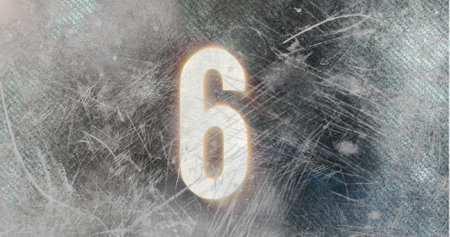1. Introduction: Reading Between the Lines
Palmistry, or chiromancy as it is sometimes known, holds a curious yet enduring position within the fabric of British folklore. Far from being dismissed as mere superstition, palm reading has woven itself into the nation’s stories, traditions, and even language. Ancient Britain, with its misty landscapes and deep-rooted fascination for the mystical, embraced the art of interpreting palms as both a practical tool and an enchanting pastime. The lines etched onto one’s hand were thought to reveal not only personal fate but also the broader patterns of destiny that shaped families, communities, and the very land itself. As we explore the major lines of the palm through a distinctly British lens, we uncover a tapestry of myths, legends, and superstitions that have coloured this practice for centuries, making palmistry much more than a parlour trick—it is a living cultural artefact.
2. The Heart Line: Love, Fate, and British Legends
The heart line is one of the most evocative features in palmistry, tracing its way across the top of the palm and believed to reveal the story of a persons romantic life, emotional resilience, and capacity for love. In British folklore and legend, the heart line carries particular significance, often entwined with tales of star-crossed lovers, fateful encounters, and cultural superstitions that still echo through contemporary customs.
Legendary Lovers in British Mythology
Throughout British history, legendary romances have captured the national imagination. The tale of Lancelot and Guinevere, for instance, has become symbolic of forbidden passion—many believed that a deeply curved heart line signified an individual destined for such intense but tumultuous relationships. Similarly, the story of Tristan and Isolde, with its themes of love defying social boundaries and tragic endings, was often linked by Victorian palmists to broken or chained heart lines.
Folk Beliefs: What Does Your Heart Line Reveal?
British superstitions around the heart line are surprisingly detailed. Some traditional beliefs held that:
| Heart Line Shape | Superstition or Interpretation |
|---|---|
| Long & Deep | A life filled with great love or many admirers; possibly blessed by fairy magic as told in Cornish lore. |
| Broken or Chained | Signs of heartbreak or repeated romantic misfortune; often linked to tragic lovers in local ballads. |
| Branches Upwards | An open-hearted nature, likely to find happiness in marriage; said to be favoured by St. Valentine himself. |
| Branches Downwards | Tendency towards melancholy in love; may reflect stories like those of unrequited love in Scottish legends. |
Superstitions That Shaped Modern Romance
Even today, echoes of these myths persist. It’s not uncommon for British couples to compare heart lines at village fairs or during family gatherings—a practice some say brings good luck or reveals hidden truths about compatibility. Folk rhymes suggest that if your heart line touches your index finger, youll marry your first love; if it ends between the middle and ring fingers, youll fall for someone unexpected—a superstition whispered across generations from Yorkshire to Cornwall.
The enduring fascination with the heart line illustrates how intertwined personal fate and collective storytelling remain in British culture. Whether viewed through the lens of palmistry or woven into the fabric of myth and legend, the heart line continues to inspire hope, caution, and curiosity about matters of love and destiny.

3. The Head Line: Wisdom, Wit, and British Scepticism
The Head Line is often associated with intellect, reasoning, and mental agility—qualities the British have long held in curious regard. In folklore and legend, intellectual cunning is as celebrated as it is doubted. Consider Merlin, the legendary wizard of Arthurian myth, whose prophecies and counsel were sought by kings yet always regarded with a healthy dose of suspicion. This sceptical attitude toward prophecy runs deep; from Chaucer’s “Canterbury Tales” to Shakespearean jesters, British stories often poke fun at those who claim knowledge of the future.
Among the British public, fortune-telling has traditionally been approached with a raised eyebrow and a witty remark rather than blind faith. The classic image of the Victorian palm reader conjures both intrigue and mockery—think of Dickens’ characters who visit soothsayers only to be gently lampooned for their credulity. Even today, many Britons regard palmistry as an entertaining diversion rather than a serious science.
This national penchant for wit and self-deprecating humour plays a key role in how palmistry is perceived. The act of reading the Head Line becomes less about uncovering immutable fate and more about sharing in a playful exploration of one’s character or potential. It echoes the broader British approach to intellect: cleverness should be valued but never taken too seriously, and wisdom is best tempered with a pinch of irony.
4. The Life Line: Health, Curses, and Anti-Jinx Charms
The life line, often the first crease to be scrutinised in a palm reading session, has long been a source of fascination across the British Isles. Unlike the heart or head lines, the life line’s reputation extends far beyond mere fortune-telling; it is woven into centuries of rural superstitions, family lore, and even folk medicine. In traditional British belief, the life line was not just a marker of longevity but a window into one’s susceptibility to bad luck or ill health—sometimes believed to be brought about by curses or ‘the evil eye’.
Folk Beliefs About the Life Line
In village communities from Cornwall to Northumberland, it was once said that a deep, unbroken life line signified robust health and protection from both natural illness and supernatural harm. Conversely, a fragmented or faint line might prompt fears of frailty or even the presence of a curse. Superstitious families sometimes turned to local wise women or cunning folk for reassurance if their child’s palm seemed “unlucky”.
Superstitions and Luck: Common Themes
| Superstition | Region | Associated Belief |
|---|---|---|
| Short or broken life line | Kent, Yorkshire Dales | Sign of vulnerability to illness or misfortune; may require protective charms |
| Circular pattern at base of thumb | Cotswolds | Believed to attract good luck and repel curses |
| Redness along the life line | Cornwall, Devon | Thought to indicate recent contact with negative energy or the ‘evil eye’ |
Anti-Jinx Charms and Folk Remedies
If someone was thought to be at risk due to a weak life line, British folk tradition offered numerous remedies. A common practice involved carrying protective charms—such as a piece of hag stone (a naturally holed stone), iron nail, or sprig of rowan—to “strengthen” one’s luck. Some families would discreetly sew these charms into children’s clothing or hide them beneath pillows. Additionally, washing hands in running water from specific streams was believed to “cleanse” away any jinx lingering on the palm.
Popular Anti-Jinx Charms in Britain
| Charm/Folk Remedy | Plausible Origin/Use | Believed Effect |
|---|---|---|
| Hag Stone (Witch Stone) | Naturally occurring stone with hole; carried in pocket or hung above bed | Protection against curses and illness signalled by poor life line markings |
| Rowan Branch/Twig | Sewn into garments or placed in doorways during key festivals (e.g., May Day) | Wards off evil spirits; enhances strength shown on life line |
| Salt Scattering Rituals | Tossed over left shoulder after seeing an ominous palm mark or after a frightful dream involving hands/palms | Dissolves bad omens and restores balance to one’s fate as ‘written’ in the palm lines |
| Running Water Handwashings | Hands washed in moving stream on Beltane morning or after perceived cursing event | Cleanses negative energy associated with breaks or knots in the life line |
The persistence of these beliefs highlights how deeply intertwined palmistry is with broader British folklore. Even today, echoes of these traditions can be found at local fairs, rural markets, and among those who keep old customs alive—reminding us that our fates are never entirely out of our own hands.
5. The Fate Line: Destiny, Monarchs, and the British Class System
Among the major lines of the palm, the fate line—sometimes called the line of destiny—has long captured the British imagination. This line is traditionally believed to reveal not only ones fortune in life but also the broader forces that shape an individual’s path, much as the tides of history shape a nation.
Destiny as Interpreted by Monarchy
Throughout British history, monarchy and destiny have been intertwined. The idea that kings and queens are “chosen by fate” echoes both in royal myths and in popular palmistry. Some old tales claim that a deep and unbroken fate line was seen on the palms of monarchs, marking them as destined rulers. In Victorian parlours, it wasn’t uncommon for palmists to link a client’s fate line with ideas of noble blood or a “calling” from above—a distinctly British twist on interpreting one’s place in society.
Tales of Social Mobility
The fate line also threads through stories of social mobility—an enduring theme in British culture. Folklore holds that an upwardly curving fate line might hint at a rise from humble beginnings to positions of influence or comfort. In Edwardian times, when class structures were more rigid yet dreams of advancement flourished, young Britons would sometimes have their palms read for reassurance that their fortunes might improve. The hope that fate could override birth still lingers in many interpretations today.
The Persistent Presence of Class
Yet, just as often, traditional British readings of the fate line reinforce the realities of class. A broken or faint fate line was sometimes interpreted as evidence of obstacles caused by societal divisions or lack of opportunity—a subtle reminder that, in Britain, destiny and class have long been entangled. While modern readers may approach such beliefs with scepticism, these interpretations persist in local superstitions and storytelling traditions across England, Scotland, and Wales.
In sum, within British myths and legends, the fate line is far more than a personal marker—it is a reflection of how society understands destiny itself: shaped by royalty, challenged by class, and always open to reinterpretation as Britain changes with time.
6. Modern Palmistry: Contemporary Beliefs and British Pop Culture
Palmistry, once woven deeply into the fabric of British folklore, has found new life in the modern era, albeit with a distinctly British twist. Today, the art of reading palms has shifted from shadowy corners and whispered legends to more public and accessible spaces. Tabloid newspapers frequently feature horoscopes and quick palm-reading guides alongside celebrity gossip, blending ancient superstition with light-hearted entertainment. The language has evolved too; “cross my palm with silver” is now a phrase uttered in jest as often as in earnest.
The Pub Conversation Phenomenon
In Britain’s vibrant pub culture, palmistry occasionally surfaces as a party trick or an icebreaker among friends. While few take the practice truly seriously, it remains a quirky subject that sparks laughter and conversation, especially after a pint or two. It is not unusual for someone to offer a palm reading at the end of a long evening—half mocking, half genuine—reflecting a national tendency to approach the mystical with equal measures of curiosity and irony.
Scepticism Meets Superstition
Contemporary British attitudes towards palmistry are best described as ambivalent. On one hand, there is widespread scepticism; most people regard palm readings as harmless fun rather than real fortune-telling. Yet old superstitions persist just beneath the surface. Some still avoid discussing ominous lines on the palm, while others secretly hope for predictions of love or luck—even if they scoff at such notions publicly.
Palmistry’s Place in Everyday Life
Despite scientific advances and rational thinking dominating modern British society, traces of palmistry linger in subtle ways. Palm-based metaphors pepper everyday speech: someone may have “the world in the palm of their hand” or be told to “read between the lines.” Palmistry stalls occasionally appear at summer fairs or seaside towns, staffed by fortune tellers who blend performance with tradition.
Ultimately, palmistry’s survival in modern Britain speaks to an enduring fascination with fate and personality. Whether through tabloid columns or casual banter in the local pub, it remains a curious link to Britain’s mythic past—a reminder that even in an age of reason, old legends and superstitions continue to cast their shadows over daily life.

